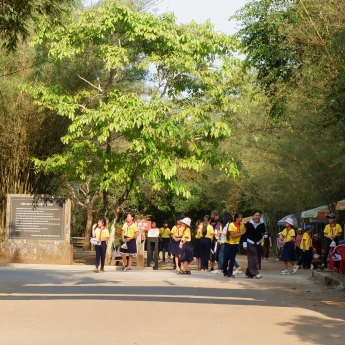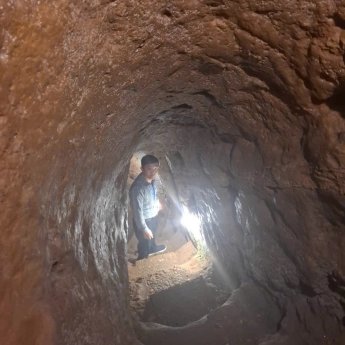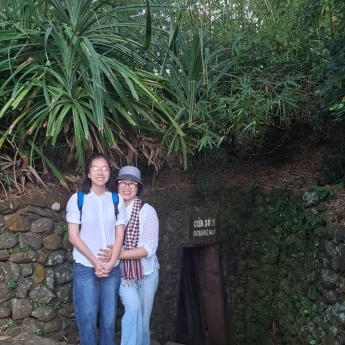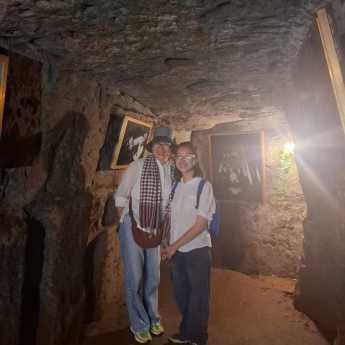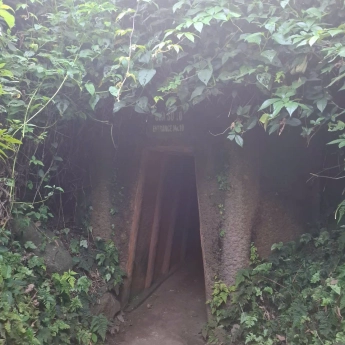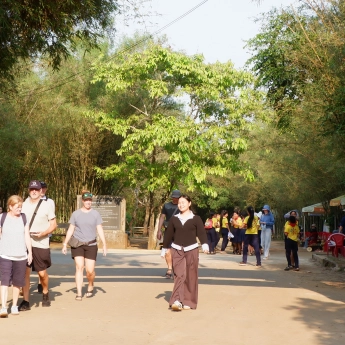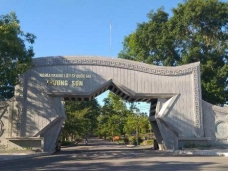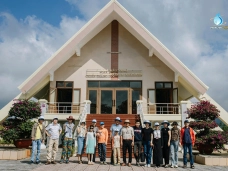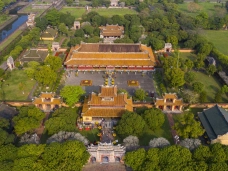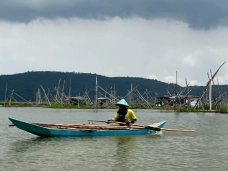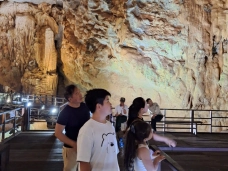Vinh Moc Tunnels – Light Beneath the Earth
26-04-2025 12:00
Main contents
Location
Highlight Image
In the heart of Vinh Linh's fiery land
Once known as a fierce coordinate of war, Vinh Linh bore the brunt of some of the most intense bombings of the 20th century. Amid this devastated landscape, a man-made wonder emerged—not built with machines, but carved by the hands, sweat, and indomitable will of the people: the Vinh Moc Tunnels.
A symbol of resilience
More than a complex underground military structure, the tunnels embody the unyielding spirit of Vietnam. They stand as a testament to the people’s unwavering desire for life, peace, and independence.
The cruelty of a senseless war
During both the resistance against French colonialism and the war against the United States, Vietnam became one of the bloodiest battlegrounds of the 20th century. In the war against the US, Vinh Linh served as a steel shield protecting the North and supporting the South via the legendary Ho Chi Minh Trail.
From 1965 to 1972, the US military dropped more than 560,000 tons of bombs on Vinh Linh—multiple times the destructive power of the bomb dropped on Hiroshima. On average, each resident of Vinh Linh endured nearly 7 tons of bombs. Over 727,000 artillery shells turned the land into ruins. Yet beneath the scorched earth, life quietly persisted.
Life underground
Amidst relentless air raids, the people of Vinh Linh chose to dig down—seeking a new life below ground to survive and continue the fight. Thus began the construction of the Vinh Moc Tunnels in early 1966 by farmers, soldiers, and local laborers from Vinh Thach commune (now in Vinh Linh, Quang Tri).
Using only rudimentary tools and their bare hands, they carved a "subterranean city" from the red basalt earth—a soil both soft enough to dig and firm enough to endure. After nearly two years of work, involving 18,000 labor days and over 6,000 cubic meters of soil moved, the tunnel system was completed. It became a refuge and home for hundreds of locals and soldiers.
A city beneath the surface
Stretching nearly 2 kilometers, the tunnels are arranged on three levels, 12, 15, and 23 meters deep, designed to withstand even the most advanced US bunker-buster bombs. With 13 entrances leading to the sea and forest, they ensured ventilation and emergency escape.
Inside, the tunnels housed not just narrow passageways but a fully functional underground community: living quarters, kitchens, wells, medical stations, meeting rooms, and even maternity wards. Seventeen children were born here—living proof of hope amid destruction.
Every meter of the Vinh Moc Tunnels carries the weight of sweat, tears, and blood. Yet these dark shelters remained warm—filled with solidarity, village love, and an unquenchable patriotism.
A living symbol of life and courage
Vinh Moc was not merely a defensive fortification. It was a sanctuary of life. For nearly 2,000 days and nights, it shielded over 300 people without a single casualty, even as bombs fell relentlessly. Not all tunnels in the area were so fortunate. Several collapsed under heavy bombardment, causing tragic losses: 4 deaths in Don Due (Feb 1967), 61 in Tan Ly (June 1967), 22 in Xom Boc (July 1967), and 39 in Binh Minh (Sept 1967).
These sacrifices underscore the significance of Vinh Moc’s engineering and unity. It was a living fortress, a lifeline for transporting supplies and wounded soldiers, especially to the strategic Con Co Island.
A longing for peace
Today, visitors to Vinh Moc do more than explore a wartime relic. They connect with a legacy of courage and a deep yearning for peace. Every step underground is a step into the past—a reminder of why we must treasure peace and protect it for generations to come.
“We did not dig tunnels to live underground forever,” said a former resident. “We dug them so one day, we could live above ground again—free and without the sound of falling bombs.”



